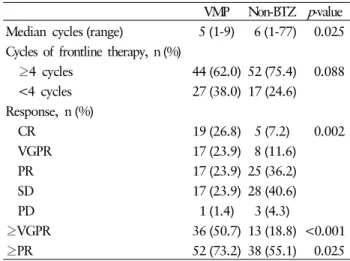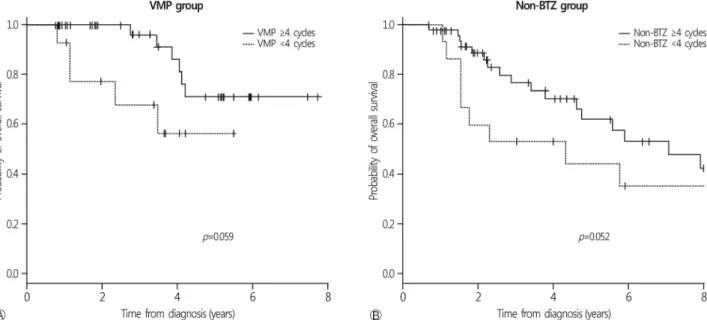Yeungnam Univ J Med 2018;35(1):76-83
Chemotherapy adherence is a favorable prognostic factor for elderly patients with multiple myeloma who are treated with a frontline
bortezomib-containing regimen
Hee-Jeong Cho
1*, Sang-Kyung Seo
1*, Dong Won Baek
1, Sung-Woo Park
1, Yoo-Jin Lee
1, Sang-Kyun Sohn
1, Ho-Sup Lee
2, Won Sik Lee
3, Ji Hyun Lee
4, Sung Hyun Kim
4, Joon-Ho Moon
11
Department of Hematology/Oncology, Kyungpook National University Hospital, Daegu;
2Department of Hematology/Oncology, Kosin University Gospel Hospital, Busan;
3Department of Hematology-Oncology, Inje University Pusan Baik Hospital, Busan;
4



